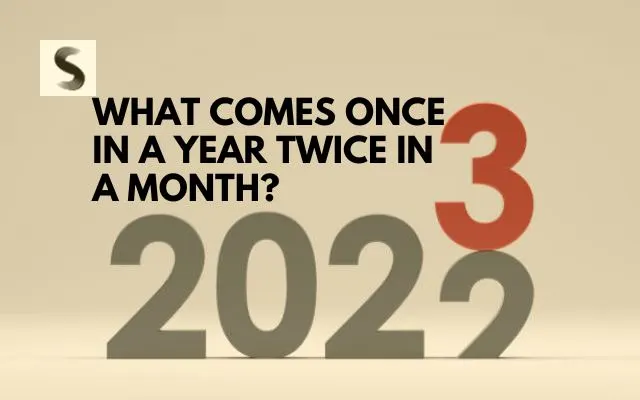Hello there, puzzle lovers! Today, we’re diving into the fascinating realm of time and calendars. But wait a minute; we’re not here for a dull history lesson. Instead, we will unravel a fun and intriguing riddle: What comes once in a year, twice in a month?
The Mystery of Time
Unravelling time’s mysteries has been a human endeavour since our earliest ancestors first noticed the changing seasons.
The Paradox of Time
But time is a paradox. It’s constant, but it feels flexible. One moment it’s dragging; the next, it’s racing. Can you relate?
The Calendar: An Overview
To understand our riddle, we first need to get acquainted with calendars. After all, they’re our primary tools for tracking time.
Breaking Down the Calendar
The calendar breaks time into manageable chunks: years, months, weeks, and days.
The Gregorian Calendar and its Intricacies
The Gregorian Calendar, the most widely used calendar system today, has a fascinating structure. And it holds the key to our puzzle!
What Comes Once in a Year, Twice in a Month?
Ready to tackle our riddle head-on?
The Power of Puzzles
Puzzles like these are brain teasers. They get your mental wheels turning, stimulating your cognition and memory.
The Answer Unveiled
So, what comes once in a year, twice in a month? It’s the letter ‘E’!
The Importance of Puzzles in Cognitive Development
Beyond fun, puzzles play a crucial role in cognitive development.
Puzzles and Brain Health
Research shows regular puzzle-solving can improve memory and concentration and even delay dementia.
Encouraging Puzzle Solving
Why not incorporate more puzzles into your daily routine?
Other Interesting Time Puzzles
Still, if you enjoyed this mystery, they are much further for you.
Time Puzzles for Kids
“Which month has 28 days?” is a classic. Every month has at least 28 days!
Time Puzzles for Adults
Try this one on for size: “What has a heart that doesn’t beat?” The answer is: “An artichoke.”
Conclusion
Puzzles are a fun and beneficial way to challenge our minds and engage with the concept of time. In unravelling the answer to “What comes once in a year, twice in a month?” we’ve solved a riddle and appreciated the complexity of our timekeeping systems and the value of keeping our minds active.
FAQs:
What are some excellent resources for more puzzles and riddles?
Websites such as BrainBashers and Riddles.com offer various puzzles and riddles suitable for all ages.
What other activities can help with cognitive development?
Reading, playing a musical instrument, learning a new language, and even physical exercise can boost cognitive development.
How can I make puzzle-solving a daily habit?
Start by setting aside a few minutes each day for puzzles. You could use puzzle apps, puzzle books, or websites.
How often does the letter ‘E’ appear in the calendar?
The letter’ E’ appears once in the word “Year”, twice in “Month”, and multiple times in days of the week and specific months.
How can puzzles benefit children’s learning?
Puzzles can improve children’s problem-solving and critical-thinking skills. They also help develop patience and persistence.
